By John Rousmaniere
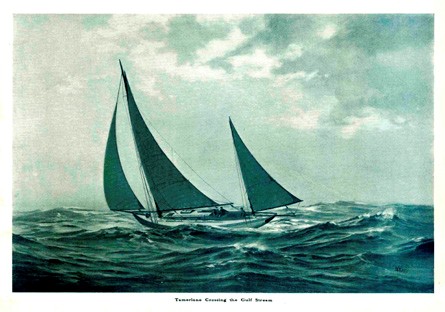 With the 50th Newport Bermuda Race coming up in 2016, I’ve been gathering stories of past “Thrashes to the Onion Patch”—a nickname inspired by the race’s frequent demanding conditions and Bermuda’s agricultural history. Here we go back to the first race, when the idea of amateur sailors going to sea in normal boats was widely considered insane.
With the 50th Newport Bermuda Race coming up in 2016, I’ve been gathering stories of past “Thrashes to the Onion Patch”—a nickname inspired by the race’s frequent demanding conditions and Bermuda’s agricultural history. Here we go back to the first race, when the idea of amateur sailors going to sea in normal boats was widely considered insane.
“Tamerlane in the Gulf Stream” is a work by the noted maritime artist Warren Sheppard, who sailed in her crew.
“Deep sea racing was inevitable. It simply had to come.” So announced Bermuda Race founder Thomas Fleming Day soon before the first start, on May 26, 1906, off Brooklyn, NY. Three boats with 15 sailors beat into a stiff south wind, headed to Bermuda. One boat withdrew due to damage, but the other two crossed the finish line, the 38-foot yawl Tamerlane and the 28-foot sloop Gauntlet. In their wake lay 700 miles of rough water and an even rougher controversy about the race itself.
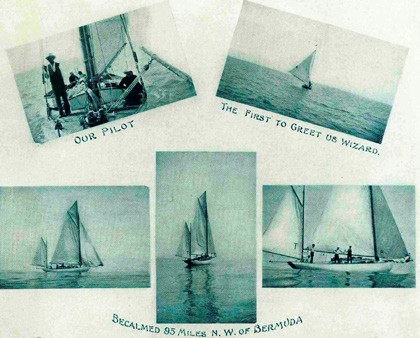 At that time in America, ocean racing was a sport for huge boats and professional sailors. A year earlier, 11 big schooners (their average length was more than 160 feet) had raced from New York to England. Tom Day said it didn’t always have to be this way. He made the first Bermuda Race a test of the revolutionary notion that the ocean is a playground for amateurs in normal boats.
At that time in America, ocean racing was a sport for huge boats and professional sailors. A year earlier, 11 big schooners (their average length was more than 160 feet) had raced from New York to England. Tom Day said it didn’t always have to be this way. He made the first Bermuda Race a test of the revolutionary notion that the ocean is a playground for amateurs in normal boats.
Nearing Bermuda, Tamerlane was met by the pilot boat with a photographer.
Here are some of the blasts fired by this radical visionary from his editor’s chair at The Rudder magazine: “The danger of the sea for generations has been preached by the ignorant.” “A noble art makes noble men, and there is no nobler art than seamanship.” “Small vessels are safer than large, providing they are properly designed, strongly built, thoroughly equipped, and skillfully manned.”
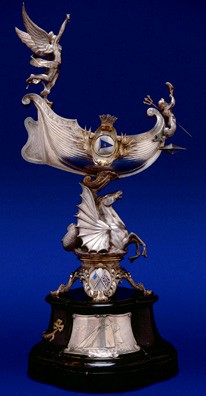 Day had harsh words for his critics: “carpet admirals,” “shore-skulkers, Central Park sailors, weaklings, and degenerates,” “gray-headed, rum-soaked piazza yachtsmen,” and “miserable old hulks who spend their days swigging booze on the front steps of a clubhouse.”
Day had harsh words for his critics: “carpet admirals,” “shore-skulkers, Central Park sailors, weaklings, and degenerates,” “gray-headed, rum-soaked piazza yachtsmen,” and “miserable old hulks who spend their days swigging booze on the front steps of a clubhouse.”
The first Bermuda Race trophy was presented by Sir Thomas Lipton and is now at the Mariner’s Museum, in Newport News, VA.
A sailor who knew Day well described him this way: “Some thought him foolish, others downright crazy. But, despite the doleful howls and lugubrious prophecies, Skipper Day persisted. He knew that small craft, if properly designed, built, and handled, were just as safe at sea as large ones. So he preached, prayed, and cajoled and cussed a lot; organized his race, and ran it to a successful conclusion, without damage or loss of a boat, or harm to an individual.”
Day once said that “sailors wanted to get a smell of the sea and forget for the time-being that there is such a thing as God’s green earth in the universe.” Himself one of those escaping landsmen, he sailed in that first race as skipper of Tamerlane, whose crew, he said, consisted of “a telegrapher, an artist, an artisan, a gentleman-of-leisure, a school boy, and an editor.”
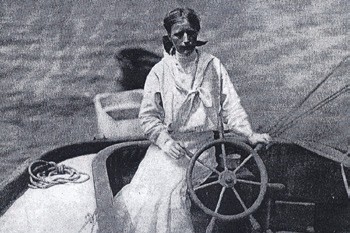 Sailing in the other finisher, Gauntlet, was Thora Lund Robinson. Before the race she had been patronized as a lady “of the petite, frail type.” That description was not at all accurate. She stood watches and was at the helm at the finish. After reaching Bermuda, she and the other sailors were wined, dined, and presented with trophies at the first of the Royal Bermuda Yacht Club’s many Bermuda Race prize ceremonies.
Sailing in the other finisher, Gauntlet, was Thora Lund Robinson. Before the race she had been patronized as a lady “of the petite, frail type.” That description was not at all accurate. She stood watches and was at the helm at the finish. After reaching Bermuda, she and the other sailors were wined, dined, and presented with trophies at the first of the Royal Bermuda Yacht Club’s many Bermuda Race prize ceremonies.
Thora Lund Robinson sailed in little Gauntlet.
Then it came time to sail home, and (as often happens) the return passage was more demanding than the race itself. One of the Tamerlane crew recalled, “By 6 a.m. we were clear of the Gulf Stream, which place, I am under the impression, might be improved upon.” He added, “I really enjoyed it, only I thought it would be kind of nice to be dry again for a change.”
Tom Day noted the discomforts, but what he remembered best was the romance that comes when a sailor smells the sea. Here is his vivid description of a magical night of phosphorescence:
“The bow waves broke away on either side a mass of fire just as if her stem was a plough being driven through a field of glowing sparks. The red and green side lights showed like the eyes of a dragon, the spray, like the breath from the monster’s nostrils, coloring as it drifted across the path of the beams. Except for the sound of the bow treading down the overtaken wave, nothing was audible save a faint rustle of the canvas—the song of the wind-satisfied sail.”
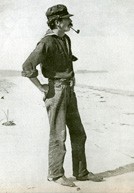 Day went on: “Boys, I wish you had been with me that night. Such a night as puts into your being that life-love, that affection, nay, passion, for existence, that gives to earth an enchantment so that all things assume an aspect of immutability, when the soul in its longing to share cries out in ecstasy, ‘Let me live forever!’”
Day went on: “Boys, I wish you had been with me that night. Such a night as puts into your being that life-love, that affection, nay, passion, for existence, that gives to earth an enchantment so that all things assume an aspect of immutability, when the soul in its longing to share cries out in ecstasy, ‘Let me live forever!’”
Thomas Fleming Day was the visionary founder of the Bermuda Race in 1906.
John Rousmaniere wrote the centennial history of the Newport Bermuda Race, A Berth to Bermuda, as well as Fastnet, Force 10 and The Annapolis Book of Seamanship. He has done nine Bermuda races and many more Bermuda deliveries.
Bermuda Race Informational Gatherings
The Bermuda Race Organizing Committee (BROC) is making a special effort to boost early interest in the 50th “Thrash to the Onion Patch,” which starts Friday, June 17 in Newport, RI. Participation Committee Chairman Dick Holliday is organizing a series of gatherings about the race and its requirements, with an emphasis on providing first-timers with information for a successful, safe passage.
John Rousmaniere, author of A Berth to Bermuda, will give a talk, and BROC members will answer questions about the next race and the entry procedure. Fifty people attended the first of these gatherings, hosted by Larchmont Yacht Club in Larchmont, NY in February, and 75 were at Stonington Harbor Yacht Club in Stonington, CT in April. The next scheduled gatherings are at New York Yacht Club’s Harbour Court in Newport, RI on November 14, and Mystic Seaport’s Adventure Series in Mystic, CT on November 19. For more information, visit www.bermudarace.com.
Reader comments:
Large Adventures in Small Vessels
I always enjoy reading John Rousmaniere, and his tribute to Thomas Fleming Day [“Tom Day and the First Thrash to the Onion Patch”; July 2015; windcheckmagazine.com] was certainly no exception.
While Tom Day was a member of many local yacht clubs, he was one of the founding members of Huguenot Yacht Club in 1894 and represented Huguenot Yacht Club in the early days of the Yacht Racing Union of Long Island Sound. As John emphasized in his article, Day was intent upon demonstrating the feasibility of safely crossing oceans in small vessels. Five years after the first Bermuda Race in 1911, Tom Day (along with Frederick Thurber and Theodore Goodwin), sailed the 25-foot Seabird from Providence, Rhode Island to Rome, Italy.
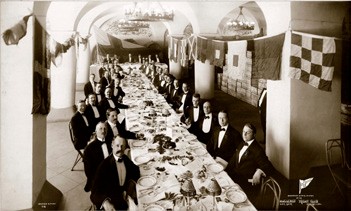
This photo of Tom Day being honored at the annual HYC dinner and election, at the Astor Hotel in New York City in 1912, is displayed in our clubhouse living room. Behind the dais is the enormous Huguenot Yacht Club burgee that Captain Day brought with him on his voyage across the Atlantic.
HYC Past Commodore Lawrence R. Rouen, New Rochelle, NY




